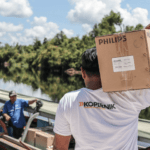Building Sustainable Sanitation Markets in Africa: Lessons from Uganda and Malawi
Access to safe sanitation is a fundamental human right, yet millions of urban dwellers in sub-Saharan Africa still live without it. In cities like Kampala, Uganda and Blantyre, Malawi, large parts of the population rely on pit latrines due to the absence of sewer systems. As a result, creating viable markets for pit-emptying services that are safe, affordable and sustainable is a crucial piece of the puzzle for ensuring access to safe sanitation in urban communities worldwide.
Water For People (WFP) has spent over a decade nurturing such markets in Kampala and Blantyre, collaborating with local authorities to formalize the sector (e.g., by introducing formal licensing requirements) and professionalize providers (e.g., by facilitating access to safe equipment, providing capacity building, etc.). In 2022, WFP engaged our team at LeFil Consulting to conduct a study to shed light on the operations, challenges and opportunities within this critical sector. We collected extensive data, surveying both pit emptying operators and end customers and conducting field visits in both cities. Since then, local authorities across both cities have leveraged insights from the study to design new initiatives to support sanitation entrepreneurs.
The results of this research offer valuable lessons beyond these two markets, which can help policymakers, development organizations and entrepreneurs seeking to replicate success elsewhere. I’ll share some key learnings from the study below.
The need for market-based sanitation solutions
Traditional top-down sanitation solutions have struggled in low-income urban areas due to high infrastructure costs and poor access. In contrast, market-based approaches, in which small, often informal businesses offer pit-emptying services, have shown promise. However, these businesses face significant constraints, from regulatory hurdles and limited access to finance and equipment, to inconsistent demand (which is higher in the rainy season, when rainwater can cause overflows and odor issues are worse).
WFP’s work over the past several years has aimed to formalize and strengthen these businesses, helping them become more reliable, hygienic and financially viable. Our study focuses on how different business models have evolved in Kampala and Blantyre, and what can be learned from their trajectories.
In Kampala, the pit-emptying market is structured around three main business models:
- Small-scale services: These entrepreneurs serve mainly base-of-the-pyramid households using low-cost equipment like “tricycles” (i.e., three-wheeled motorized carts with a small cargo trailer). They operate with thin margins and high per-job costs, making them highly vulnerable to fuel price increases and inflation.
- Mid-sized operators: These businesses use pickup trucks to handle larger jobs (10 barrels of waste or more), which allows them to spread fixed costs and improve per-job profitability. However, they still face seasonal demand fluctuations.
- Organized and zoned services: The largest players have a more sophisticated model, which includes servicing large clients and institutions (e.g., schools) and conducting targeted “emptying campaigns” in peri-urban areas. These campaigns are time-bound and use a zoning approach, supported by community outreach (via radio or local leaders). This model requires complex logistics and marketing, but it allows providers to reach a wider range of customers. It also helps offset seasonal dips in demand, since residents in peri-urban areas typically lack regular access to pit emptying services, and are more likely to take advantage of these temporary campaigns even during the dry season.
All of these models struggle with market saturation, seasonality and informal competition. Entrepreneurs have adapted by engaging local agents (i.e., individuals who line up customers from their community and refer them to providers in exchange for a commission), aggregating jobs in one area to save on fuel, and diversifying into related services like toilet construction or sales of SaTo pans (plastic toilet pans with a self-closing seal, designed to improve hygiene and reduce odors in non-sewered sanitation systems).
Despite these innovations, entrepreneurs report that institutional procurement remains a bottleneck. Navigating the formal bidding process is costly and bureaucratic, and often yields few contracts. Targeted support could help level the playing field, especially for smaller operators. That has been a focus of both WFP and the Kampala Capital City Authority (i.e., the city council), which has been actively investing in efforts to formalize and professionalize the local pit emptying sector, by providing subsidy programs and operating a call center which refers customers to formal providers.
In Blantyre, the market is similarly diverse, but it’s organized around different categories:
- Pit emptiers without transport: Often new entrants, these businesses mostly serve peri-urban households using rented vehicles. This model has the highest operational cost per job and is most vulnerable to illegal dumping practices, as providers may ask clients to supply land nearby to dispose of the sludge instead of paying for transportation to the treatment plant.
- Pit emptiers with transport: These entrepreneurs use manual equipment and small trucks to serve both high-volume clients and hard-to-reach areas. They cluster jobs geographically to reduce fuel costs, and rely on flexible staffing to manage operations.
- Cesspool tanker operators: These are well-established businesses serving institutions and high-income households with septic tanks. Their profitability depends heavily on long-term contracts and the efficient use of tankers.
Blantyre’s market is still maturing. While customer awareness and demand have grown, illegal emptiers (i.e., those operating without a license and/or dumping waste in unauthorized locations) still pose a major threat to formal businesses. Entrepreneurs also report high dumping fees and inefficient payment systems (e.g., local governments requiring in-person fee payment at public offices) as key challenges. Mobile payment systems and decentralized dumping sites could significantly reduce costs and improve service uptake.
Demand creation and customer insights for sanitation entrepreneurs
In both cities, the most effective marketing channel is word-of-mouth. Flyers and door-to-door campaigns help, while mass media and call centers have shown limited potential, especially among poorer households. Agents play a bigger role in Kampala, while Blantyre relies more on pit emptiers doubling as marketers.
WFP also experimented with voucher programs to stimulate demand, whereby certain households could access pit emptying services at discounted prices, thanks to subsidies offered by WFP and local governments. These schemes helped newer businesses build a client base, but were less effective as a long-term strategy, since many clients expect continued subsidies, undermining the market’s sustainability.
The customer surveys we conducted for this study revealed that price sensitivity is a major factor in decisions about when, or whether, to purchase these services. Households often delay emptying until absolutely necessary, and opt for partial emptying when cash-strapped. Price is also a major driver in the choice between a formal and informal provider, particularly among poorer households; these customers have also expressed interest in alternative payment models, such as a subscription-based service.
Across both cities, the clearest drivers of profitability are:
- Job size: More barrels per trip mean better returns.
- Vehicle utilization: Minimizing “empty trips” through aggregation of nearby jobs is essential.
- Diversification: Many entrepreneurs offer multiple services (e.g., toilet/latrine construction and repair, SaTo pan installation) to cope with seasonal dips in demand.
- Institutional contracts: These provide predictable cash flow and can offset the low profitability of serving low-income customers.
However, many operators still struggle to break even, particularly those serving the poorest households. Supporting these businesses through better regulatory enforcement (to curb illegal pit emptying), market linkage support (e.g., facilitating institutional procurement) and infrastructure development (e.g., new dumping sites) is key.
Lessons for the scaling and replication of sanitation services
A central question our study raises is whether Kampala and Blantyre’s models can be replicated elsewhere — and if so, how. Key lessons include:
- There is no “ideal” sanitation entrepreneur: Success often comes from persistence, adaptability and local knowledge — and there are no easy “proxies” (e.g., specific entrepreneurial characteristics or backgrounds) for identifying the most promising pit emptiers to support. Nurturing a broad base of entrepreneurs initially, and then focusing on the best-performing ones, is a more effective strategy than trying to hand-pick winners from the start.
- Peer-to-peer learning is powerful: New entrepreneurs benefit more from shadowing successful peers than from generic training programs. Mentorship models and franchising could be promising ways to spread best practices.
- Systems matter more than subsidies: Investing in infrastructure (e.g., new dumping sites), regulation and enforcement has more lasting impact on building a healthy pit-emptying market than direct financial support to entrepreneurs (e.g., subsidized vehicles) or customers (e.g., voucher programs), which can provide temporary boosts but create imbalances and market distortions in the long run.
- Tailor strategies for smaller towns: In less densely-populated areas, sustaining multiple pit-emptying businesses may not be viable. A “hub-and-spoke” model, where urban operators occasionally serve peripheral towns, may be more effective.
- Regulatory enforcement must improve: Associations like the Gulpers Association of Uganda in Kampala and the Pit Emptiers Association in Blantyre play an important role in promoting compliance and professional standards by offering peer-to-peer educational initiatives and capacity building. Strengthening these associations and aligning them with local authorities to facilitate the identification and registration of all active providers can help formalize the sector further.
Conclusion: Towards a resilient sanitation ecosystem
The experiences of sanitation entrepreneurs from Kampala and Blantyre demonstrate that creating sustainable pit-emptying markets is possible, but it’s a long-term endeavor. It’s not just about equipment and training: Building these markets requires understanding demand, creating an enabling environment for local entrepreneurs and building supportive systems around them. Encouragingly, since the study, local authorities have continued experimenting with practical support measures: In Blantyre, a new call center run by the city council has boosted customer referrals, while in Kampala, the city authority is piloting service agreements with pit emptiers which incentivize formalization and safe sludge collection and treatment.
By focusing on adaptive support, peer learning and targeted infrastructure investments, development actors and governments can help build inclusive sanitation ecosystems that serve even the poorest urban households. The journey is complex, but the lessons from these two cities offer a compelling roadmap forward.
To find out more about pit emptying markets in Kampala and Blantyre, watch our short video or access our full study.
Cecilia Gamba is a Junior Partner at LeFil Consulting.
Photo credit: Wikimedia Commons
- Categories
- WASH



